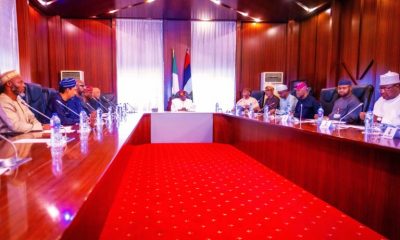ICT
More debate on telecom mast radiation
Published
8 years agoon
By
Olu Emmanuel
Since the introduction of wireless telecommunication in the 1990s, there has been unending argument, whether telephone networks emit electromagnetic radiation, EMR, which pollutes cities and rural areas.
With multiple sources of mobile communication technology, people fear that it could result in exposure of people and wide-life to microwaves that can have intense adverse health effects.
Expectedly, the effect of telecommunications equipments, such as masts, have been a subject of interest and concern to people worldwide, given the speed of mobile phone penetration in both developed and developing nations. However, the Nigerian Communications Commission, NCC, had, on various occasions, dismissed the fear that radiation from telecom masts could have negative health implications, insisting that no known study has proved so.
Meanwhile the National Environmental Standard, Regulatory and Enforcement Agency, NESREA, appears to be stoking fire on the debate. Director General of the agency, Dr Lawence Anukam, in a television interview recently, called for caution in sitting telecom masts around living areas, admitting that there have been conflicting reports about the level of radiation coming from telecom masts.
He cited a WHO report adopted in Rio in 1992 on e-waste. Although he noted that the report was not yet concluded, he however warned people to be cautious about exposure to telecom masts.
According to him, WHO, at the conference adopted precautionary principle against radiation from telecom masts, “which means that we should not wait for overwhelming evidence of science before we take action as regards our environment.”
Continuing, he said “what we know today that may not be hazardous or carcinogenic might be found to be,tomorrow.
Anukam maintained that though, the radiation is not yet proven completely to having harmful effects, people must adopt precautionary principle against telecom masts because based on their build up, bio accumulation in the long run, can become hazardous.
“Let us not assume that because the result is not conclusive, we take it for granted. Apply precaution, by not building masts close to the house and all other necessary things that should be done in line with existing laws.”
He disclosed that the agency is inundated with complaints about some telecom operators who violate the stipulated rules of observing a 100 metre radius when building telecom masts but assured that steps are being taken to punish all the culpable telcos.
He also blamed the violation on communication gap between telcos and their clients who they contract to deploy masts and base stations, as he urged the telcos to always abide by laid down rules.
He urged operators to carry out Environmental Impact Assessment, EIA, before and after building masts, as it is in line with the agreement between NESREA the NCC and other organs of government regulating telecom masts.
ALSO SEE: UNIBEN postpones Post-UTME indefinitely due to NASU strike
According to him, “regulating the industry has done us a lot of good. It has made communication easy but in doing that, both in terms of wealth and commerce, let us do it in harmony with nature.
“NESREA has had interactions with NCC some years ago based on our different laws yet we still receive a lot of complaints about telecom masts and we have stepped up our game to address it. We came up with a regulation for telecom mast called House Cleaning, within areas where telecom masts are located, how they are operated and how close they are to houses.
“Experience has shown us that the telecom operators give out the contract of building the masts to contractors with a condition that, the more you construct the more contracts you get. In a particular instance, we found out that there was a gap in communication that led to building a site at a closer position to a residential building.”
NESREA responsibility
To guide against impending violations he said NESREA has made it compulsory to have environmental report on every mast every 3 years.
“Our responsibility is to ensure that the provision stated in the EIA is actually being followed. If you violate any provision, the law will be fully applied on you by way of sanction. What is important is that reports should be done every three years. The law has a big sanction if you have not done EIA and location.”
Existing masts
On how the agency is tackling the existing masts, the DG said “we have mandated the operators to do two environmental audits. Every facility in Nigeria by law is expected to carry out environmental audit every three years. It is an assessment by a team of environmental consultants on how far they have fared in the last years and must be submitted to the agency.”
You may like


Ibietan’s book on cyber politics for public presentation 25 July


Tinubu holds meeting with MTN Group Chairman, NCC Vice Chairman


Man attempts jumping down from a mast in Lagos


Rights’ Group ‘wins case against FCC on safety guidelines for 5G and wireless


NCC debunks reports on 5G network operation in Lagos


NCC speaks on fibre optic cable laying in Lagos, others
Trending

 Latest4 days ago
Latest4 days agoNigeria’s kidnap-for-ransom industry nets N2.57bn in one year

 Latest2 days ago
Latest2 days agoReactions follow US strikes on terrorist targets on Christmas Day

 News1 day ago
News1 day ago2027: Lagos Lawmaker Bonu galvanize support for Tinubu’s reelection, initiates fitness walk for Constituents Wellness, Unity

 Latest3 days ago
Latest3 days agoPresidency debunks viral claim of change in Tinubu’s Chief of Staff

 Energy5 days ago
Energy5 days agoDiesel, petrol prices ease year-on-year despite monthly fluctuations — NBS

 Comments and Issues5 days ago
Comments and Issues5 days agoWhen police do the right thing

 Business5 days ago
Business5 days agoNaira strengthens below N1,460/$ as CBN support sustains forex market stability

 Business5 days ago
Business5 days agoNIN now serves as tax ID for Nigerians under new tax regime — FIRS, experts clarify

